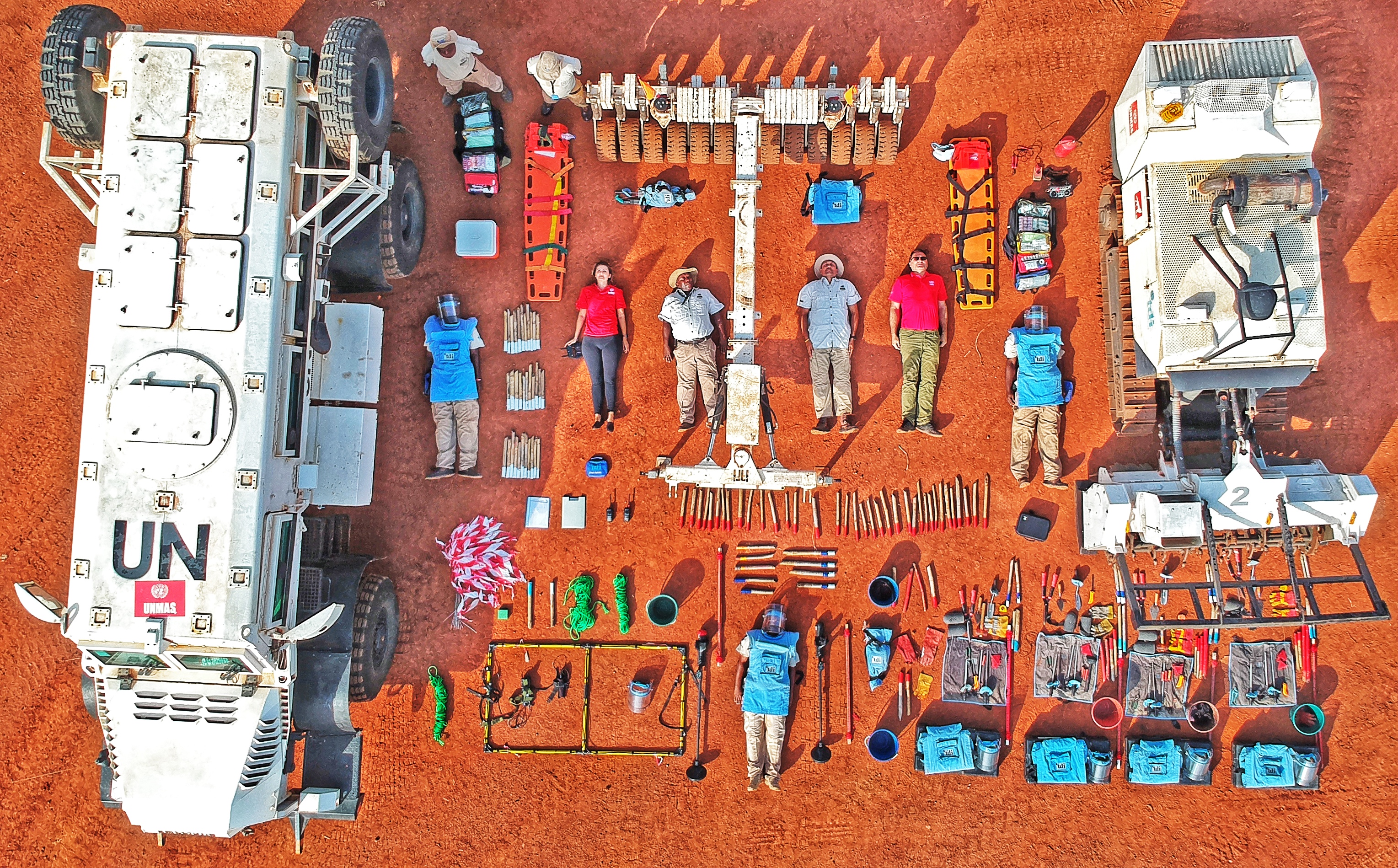
UNMAS demining team operating in Abyei as part of the United Nations Interim Security Force for Abyei (UNISFA). Photo UNMAS/Irina Punga
Established in 1997, the United Nations Mine Action Service (UNMAS) works to eliminate the threat posed by mines, explosive remnants of war and improvised explosive devices by coordinating United Nations mine action, leading operational responses at the country level, and in support of peace operations, as well as through the development of standards, policies and norms.
As a specialized service of the United Nations located within the Department of Peace Operations, UNMAS operates under UN legislative mandates of both the General Assembly and the Security Council. UNMAS also responds to specific requests for support from the UN Secretary-General or designated official.
The designations and the presentation of the materials used in this exhibition, do not imply the expression of any opinion whatsoever on the part of the United Nations concerning the legal status of any country, territory, city or area or of its authorities, or concerning the delimitation of its frontiers or boundaries. Also, the boundaries and names shown and the designations used in this exhibition do not imply official endorsement or acceptance by the United Nations.
This exhibition was produced by UNMAS, with illustration and design by Portia Kitner, and assistance from an anonymous designer. Content was provided by Legacies of War, Legacy of War Foundation, Mines Advisory Group, Norwegian People's Aid, UNDP, and UNICEF. A special thanks to the International Campaign to Ban Landmines, Landmine and Cluster Munition Monitor, Mine Action Review, the Yemen Executive Mine Action Centre, and Daeyong Kim (UNMAS Threat Mitigation Advisor) for providing data.
Mines, explosive remnants of war and improvised explosive devices continue to kill or injure thousands of people every year – many of whom are children. We must do more to protect people living under the shadow of explosive ordnance, from Syria, Somalia and Afghanistan to Myanmar, Cambodia, and beyond."
- United Nations Secretary-General, António Guterres
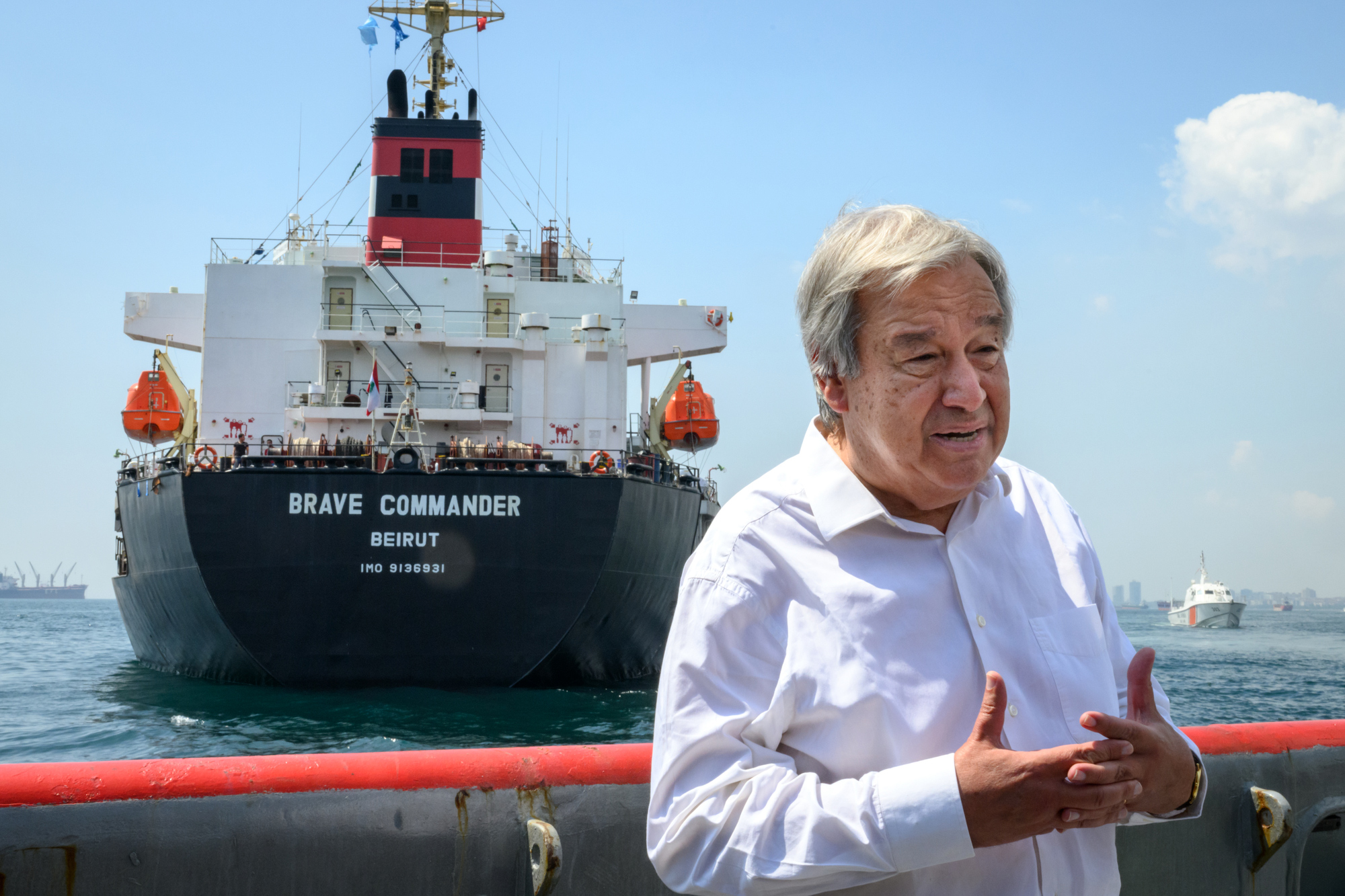
Secretary-General António Guterres travelled to Instanbul and oversaw the departure of two ships involved in the Black Sea Grain Initiative, a UN-brokered operation to bring urgently needed hunger relief to the Horn of Africa. UNMAS supported the Black Sea Grain Initiative by providing sea mine expertise. UN Photo/Mark Garten
SURVIVORS CANNOT WAIT
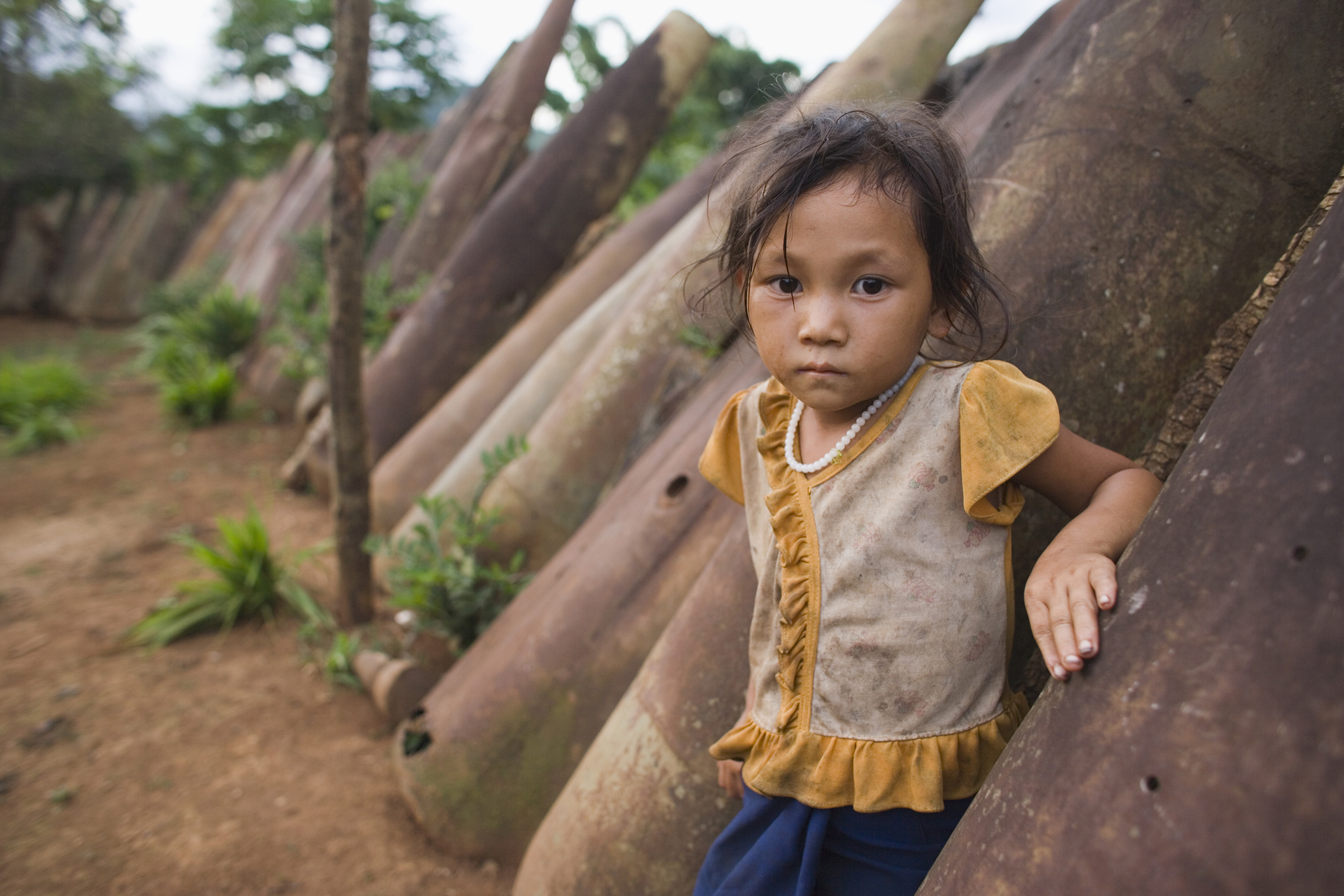
Children grow up surrounded by decades old ERW. This is Mor, a 6 year old girl, leaning against a fence made from giant bomb canisters. Xieng Khouang, the Lao People’s Democratic Republic, 2006. Photo Legacies of War/Phil Borges

Khont Som, Tong (7), Lita (4), Maya (15), Khnit (64) “I am so happy to see MAG, we are all relieved. We hear explosions all the time so they are finding a lot of bombies*. It makes me feel safer.
I have been here for four years. I came from Stung Treng because there wasn’t enough land there. The land was cheaper, and we have a chance of a future here. I knew about the dangers; villagers told me when I came. I didn’t quite realise how bad it was though. I found out many people had died here – that made me feel scared working on the farm. I was so afraid for the children.
But MAG is here, and I am very happy. Soon I will be able to let my children play freely. We have been so worried for them. They are just children. MAG gave us lessons and that helped. MAG has cleared the area where we grow rice but other land we have is not safe yet. When MAG clears it, we will grow bananas. We are too afraid to use it now.” Photo MAG Cambodia/Sean Sutton

Cin Sua and baby Chan Phna. Mother Tha Touh: "My baby was born on a cleared minefield. We work as labourers, it’s a hard life." Photo MAG Cambodia/Sean Sutton
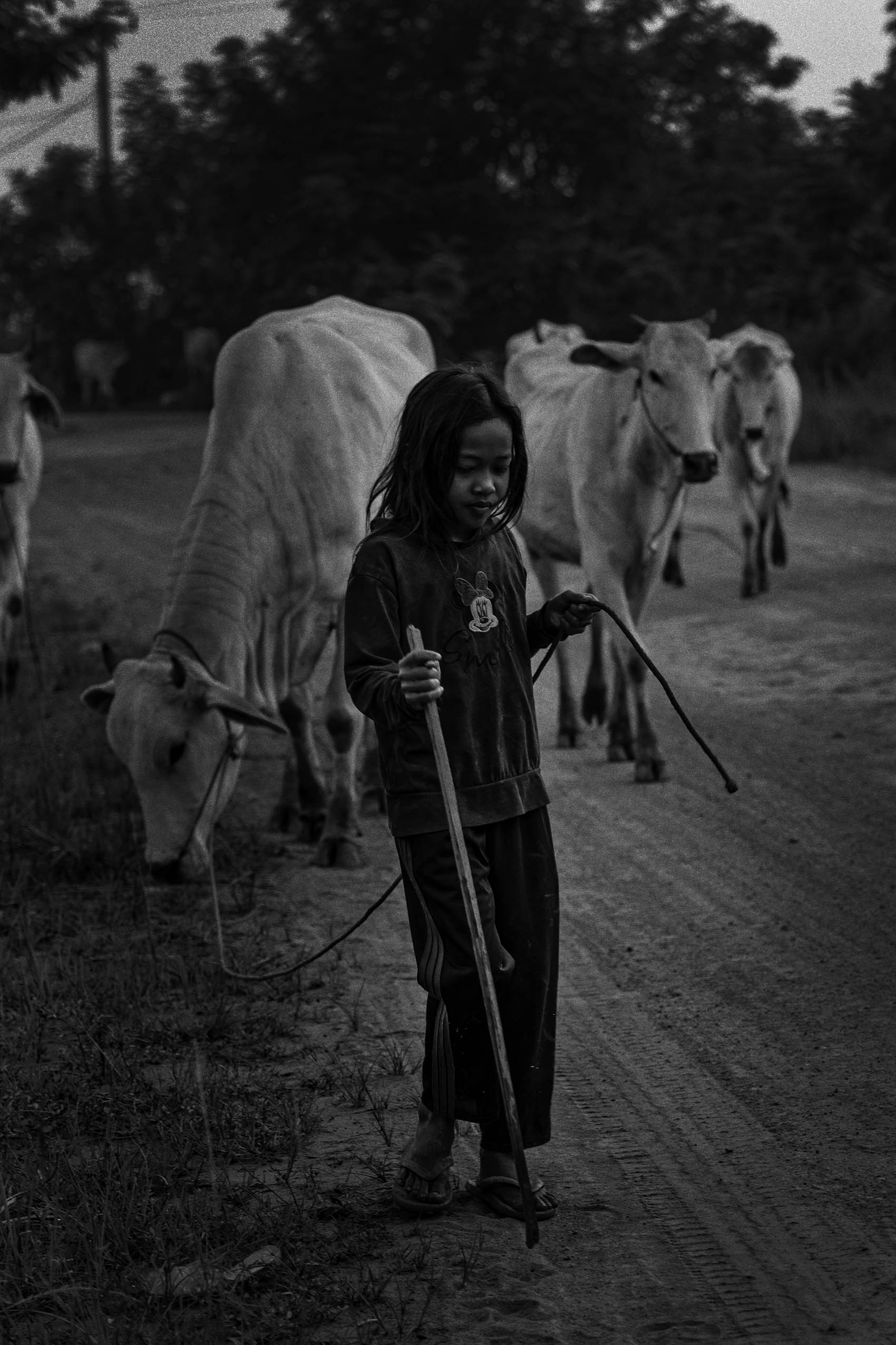
Young cattle herder. Photo MAG Cambodia/Sean Sutton
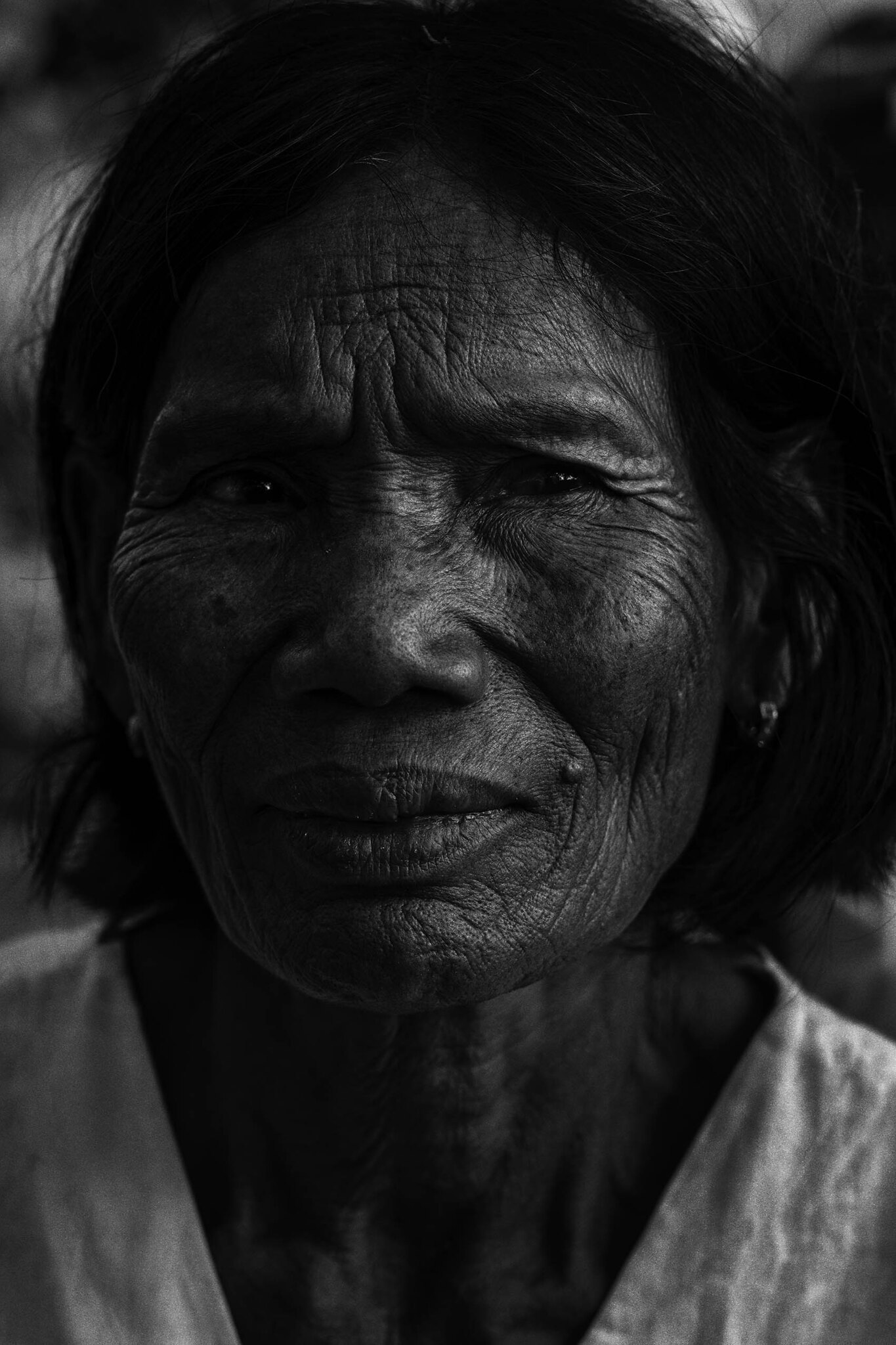
Sokeng: “The hill next to the lake was an important base in the war for the Vietnamese soldiers and it was bombed many times, so there are a lot of UXO. You could see them lying around, a lot of them. We were always worried there would be an accident here. There were times when people would find bombies and throw them in the lake! Two people were killed trying to open a bombie and one was seriously injured here." Photo MAG Cambodia/Sean Sutton

A moment between a father and son, whose farmland had once been contaminated but is now clear thanks to Humanitarian UXO Demining Teams of Lao People’s Army in Bolikhamxay province. Photo UNDP/Pongpat Sensouphone
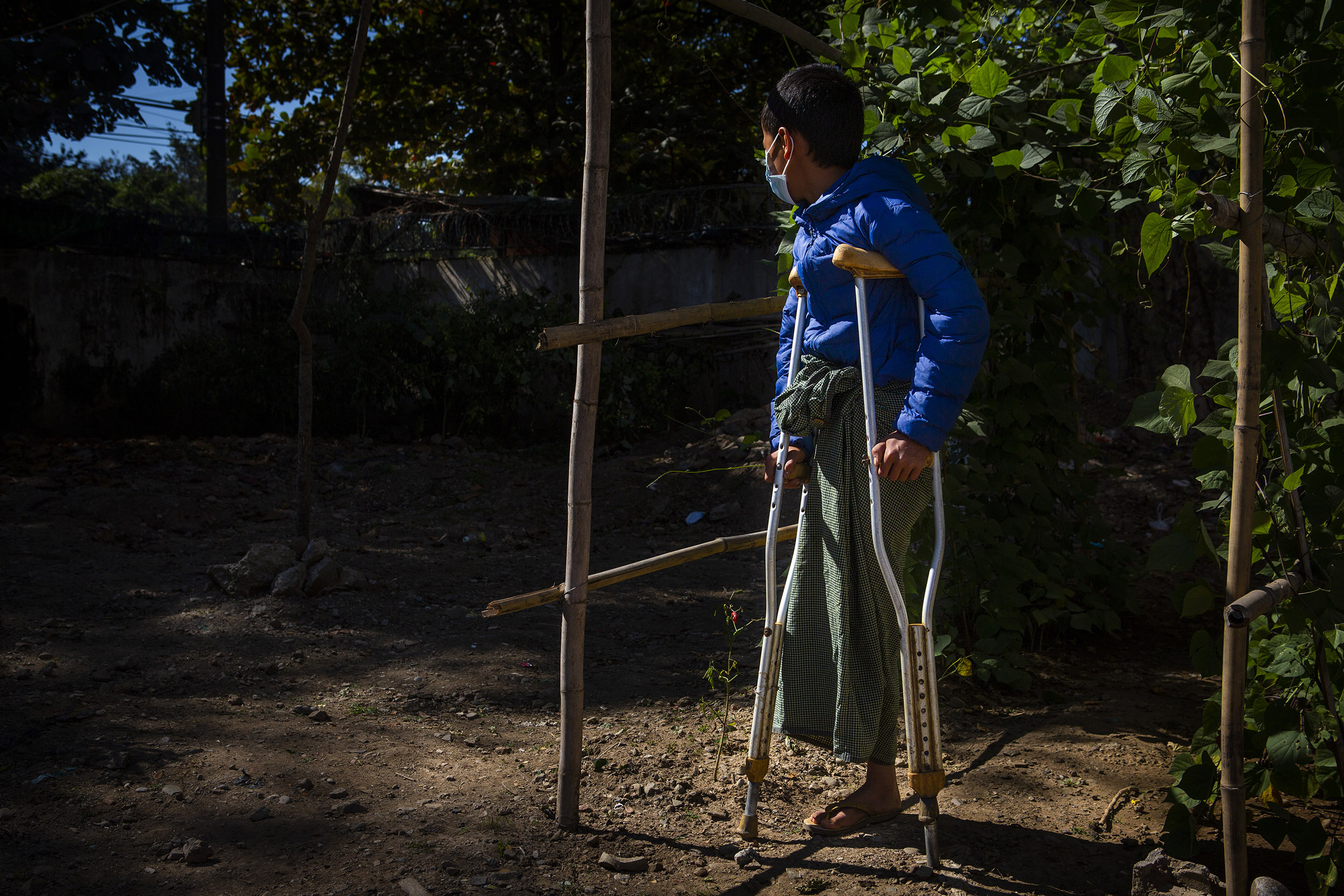
Sai (not his real name), 14, lost his left leg in a mine explosion in Hsipaw township, Northern Shan State, Myanmar. Photo UNICEF Myanmar/Nyan Zay Htet

As a child Yong Kham recalls seeing and hearing bombs rain down destruction on his family and village. While hiding in a trench, he was wounded by shrapnel from an explosion. Decades later, his eldest son, Tong Dum, was killed in a fatal UXO accident. "What happened in the Lao People’s Democratic Republic should never happen again. No country and its people should have to go through this." Sepon, Savannakhet province, 2022. Photo/Legacies of War
*A bombie refers to small unexploded ordnance (UXO) that is discharged from a cluster munition.

Ukraine
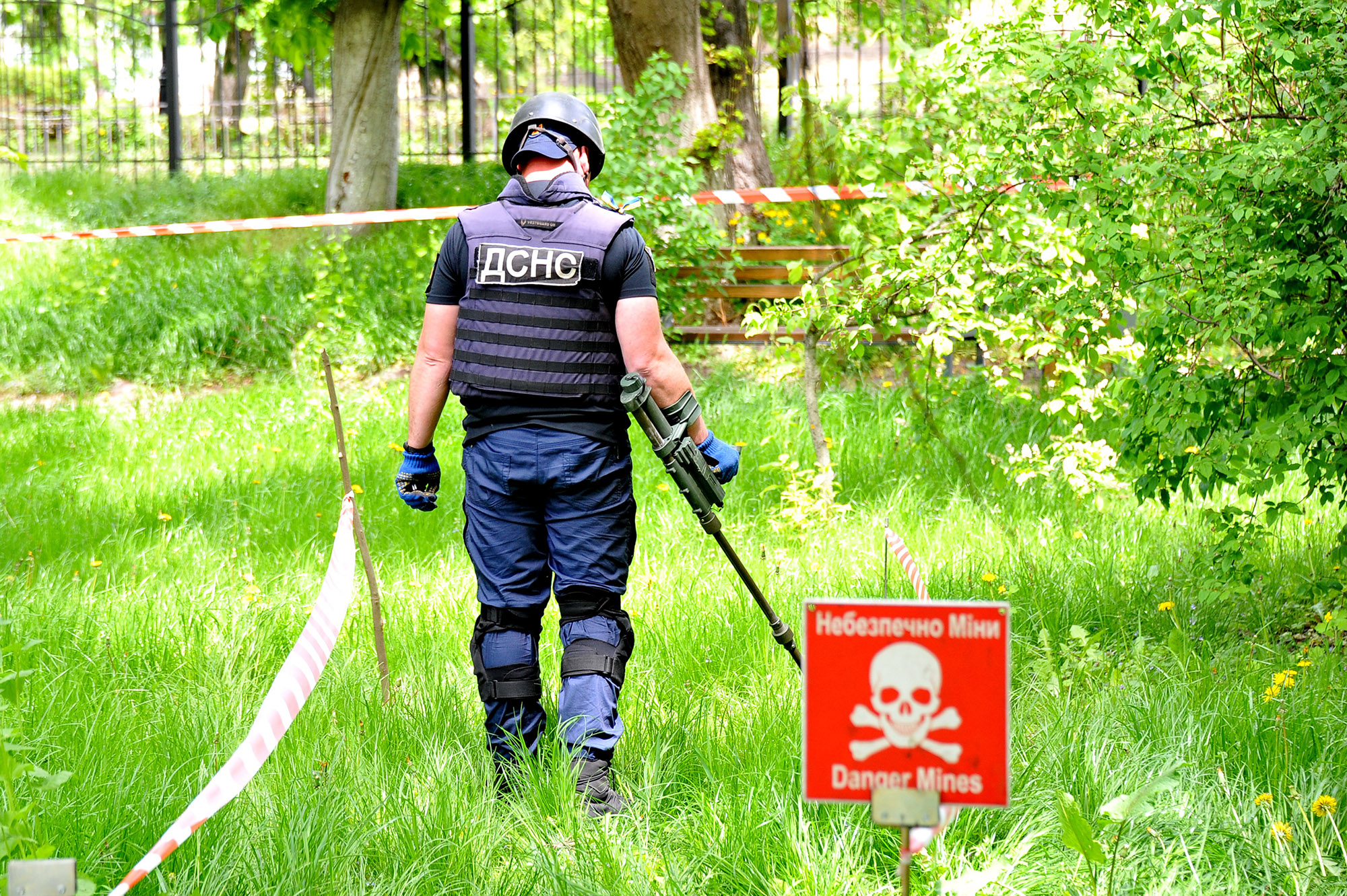
A deminer from Ukraine’s State Emergency Service searching for explosive ordnance in Makariv, Kyiv Oblast, Ukraine. May 2022. Photo UNDP Ukraine/Oleksandr Simonenko

A deminer of the State Emergency Service of Ukraine inspects equipment before humanitarian demining at a village near Kherson, Ukraine. 15 November 2022. Photo UNDP Ukraine/Pavlo Petrov

Deminers from Ukraine’s State Emergency Service use heavy equipment for demining in Kherson region, Ukraine. 15 November 2022. Photo UNDP Ukraine/Pavlo Petrov
Myanmar
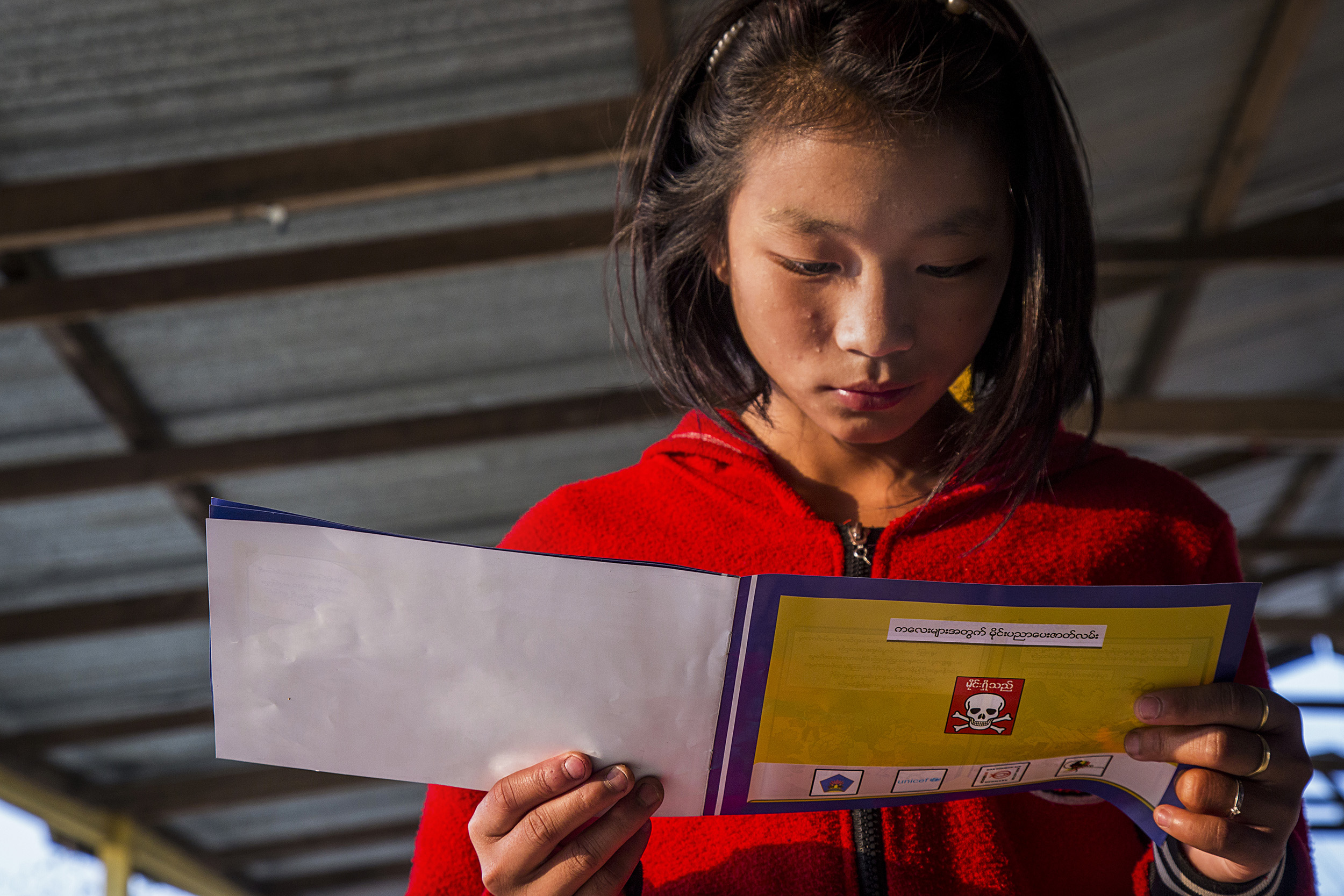
Sai Nuu, 13, reads a mine risk education cartoon during a workshop for children at an IDP camp in Wine Maw township, Kachin State, Myanmar. Photo UNICEF Myanmar/Nyan Zay Htet

Jat Sai Naw, 8, was playing with his friends in Man Win Gyi village when a child picked up a grenade that exploded. Jat Sai Naw was badly injured. Photo UNICEF Myanmar/Minzyar Oo

Sai (not his real name), 14, lost his left leg in a mine explosion in Hsipaw township, Northern Shan State, Myanmar. Photo UNICEF Myanmar/Nyan Zay Htet
Colombia
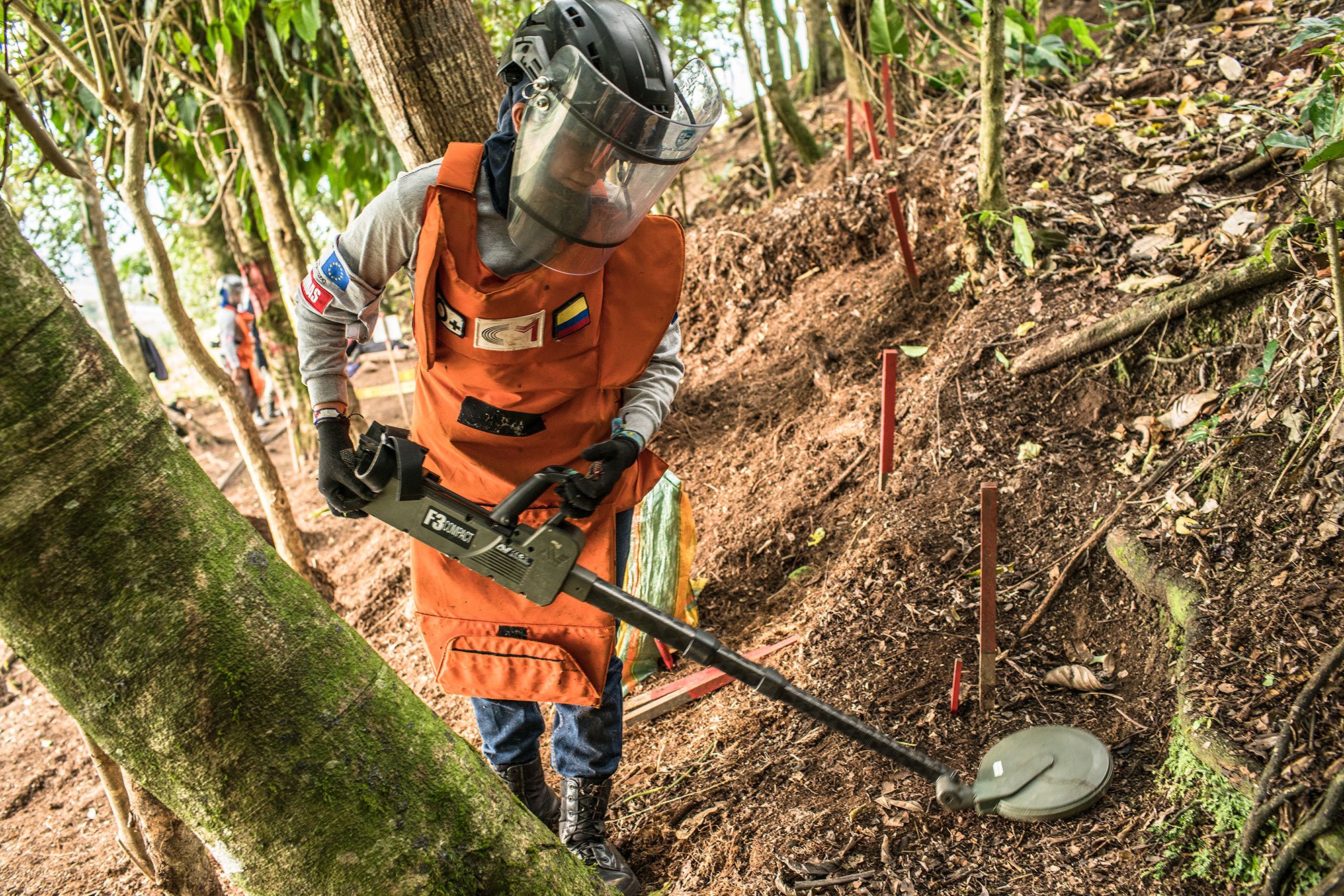
A woman deminer in an UNMAS project in Algeciras, Huila. She is using a metal detector to find landmines. Photo UNMAS Colombia/Juan Arredondo

A minefield in the mountains of Caquetá in southern Colombia. Photo UNMAS/Colombia
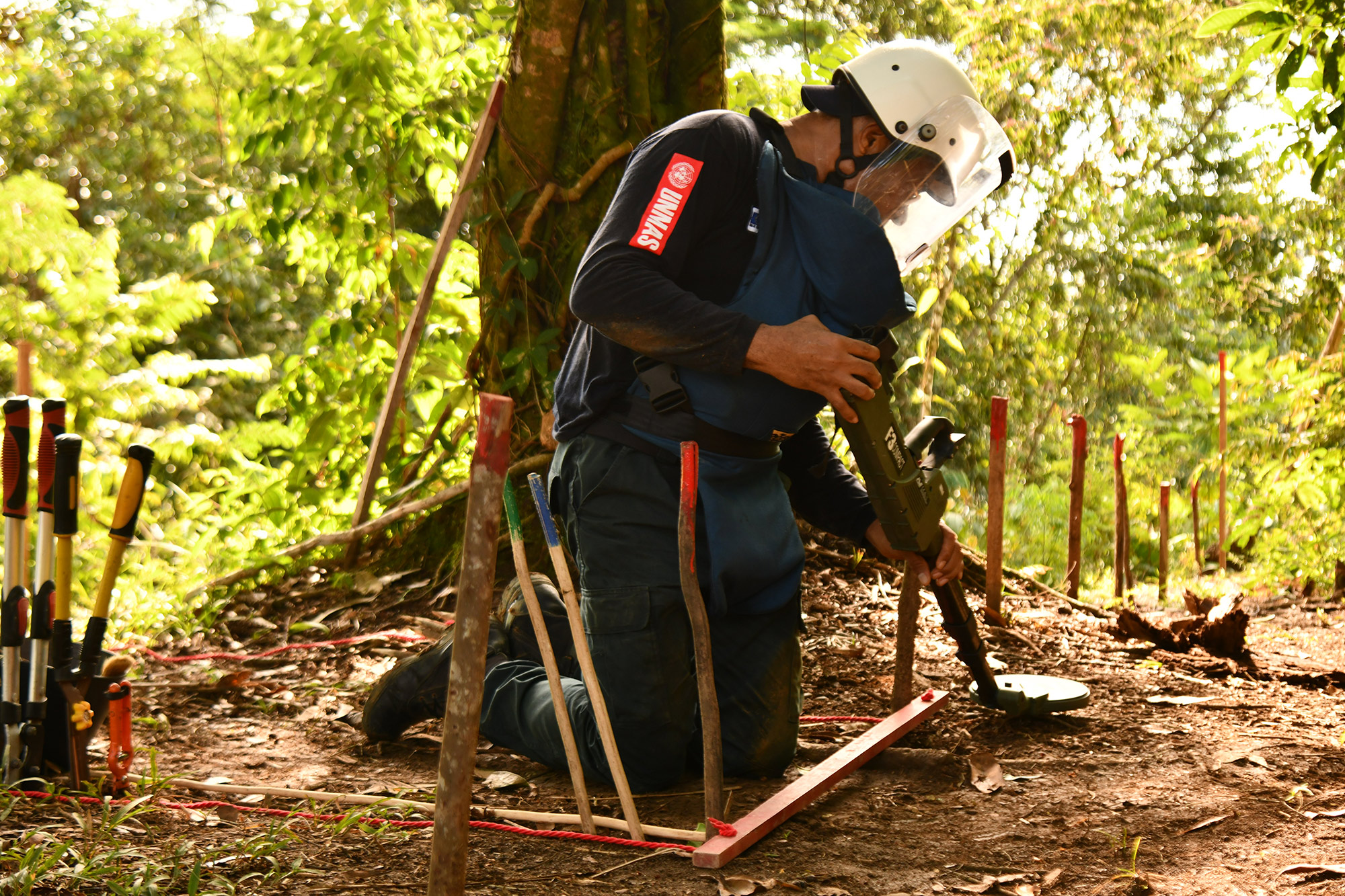
A FARC-EP ex-combatant participating in a humanitarian demining training delivered by UNMAS in the municipality of La Montañita, Caquetá. Photo UNMAS/Colombia
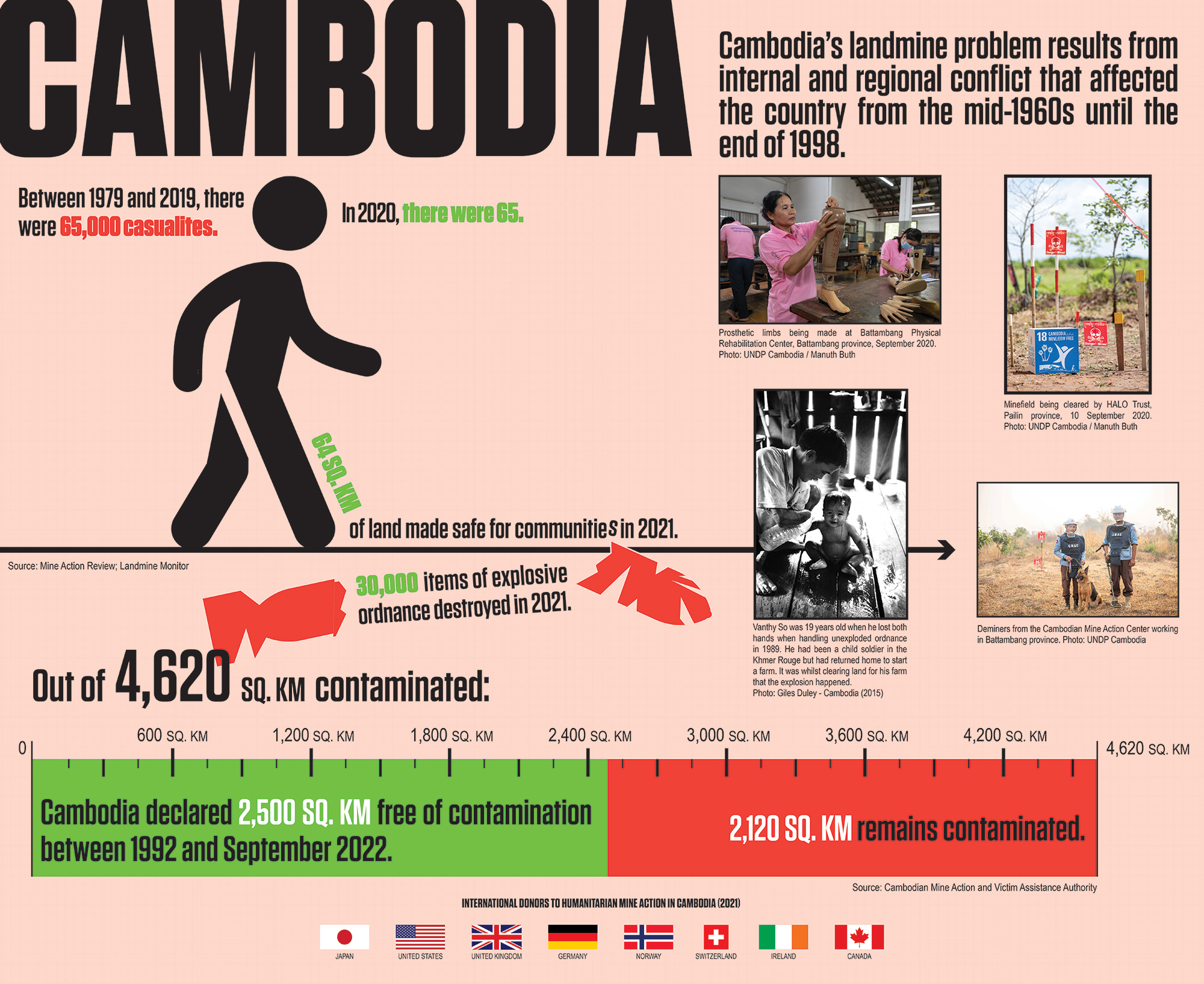
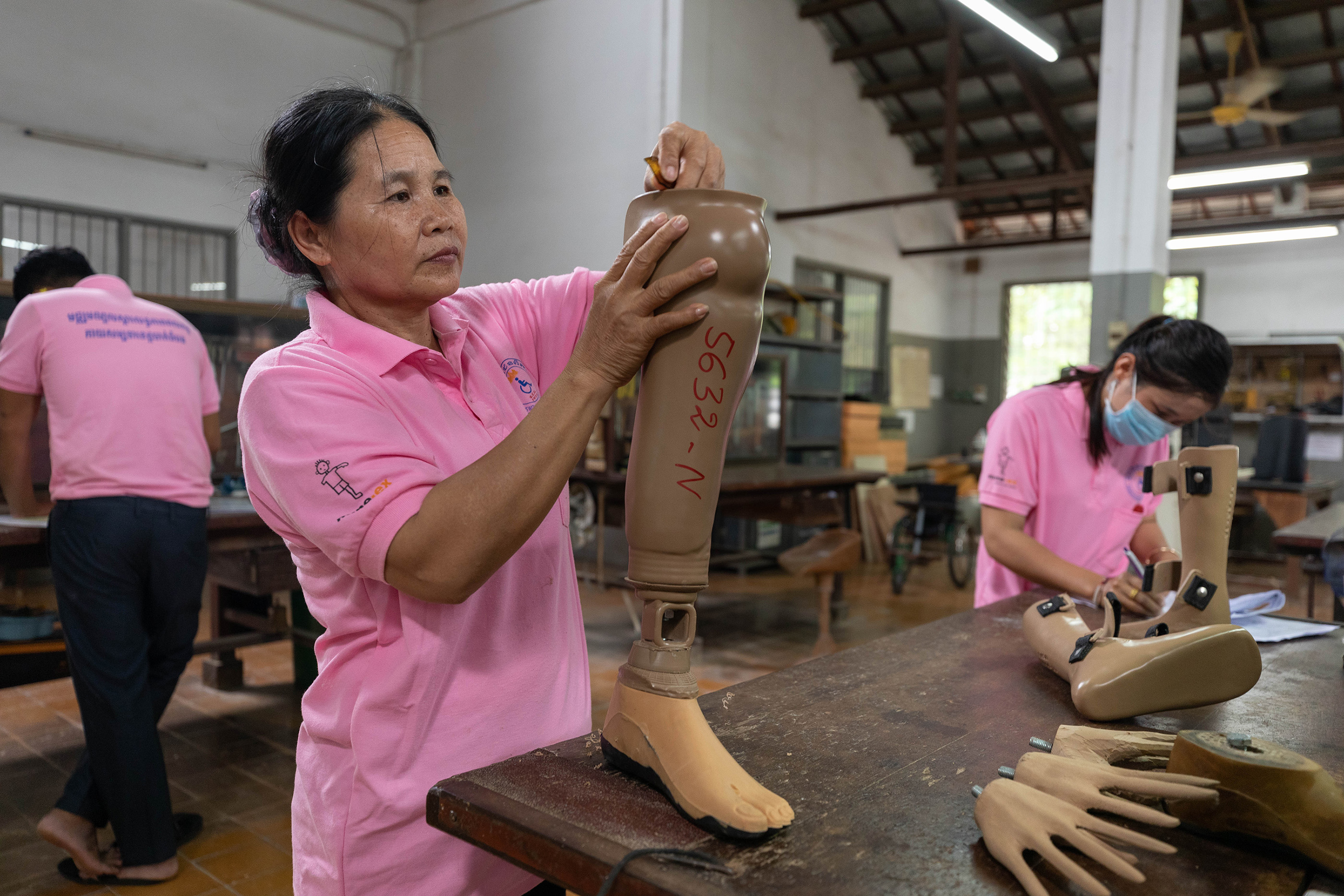
Prosthetic limbs being made at Battambang Physical Rehabilitation Center, Battambang province, September 2020. Photo UNDP Cambodia/Manuth Buth

Deminers from the Cambodian Mine Action Center working in Battambang province. Photo UNDP Cambodia
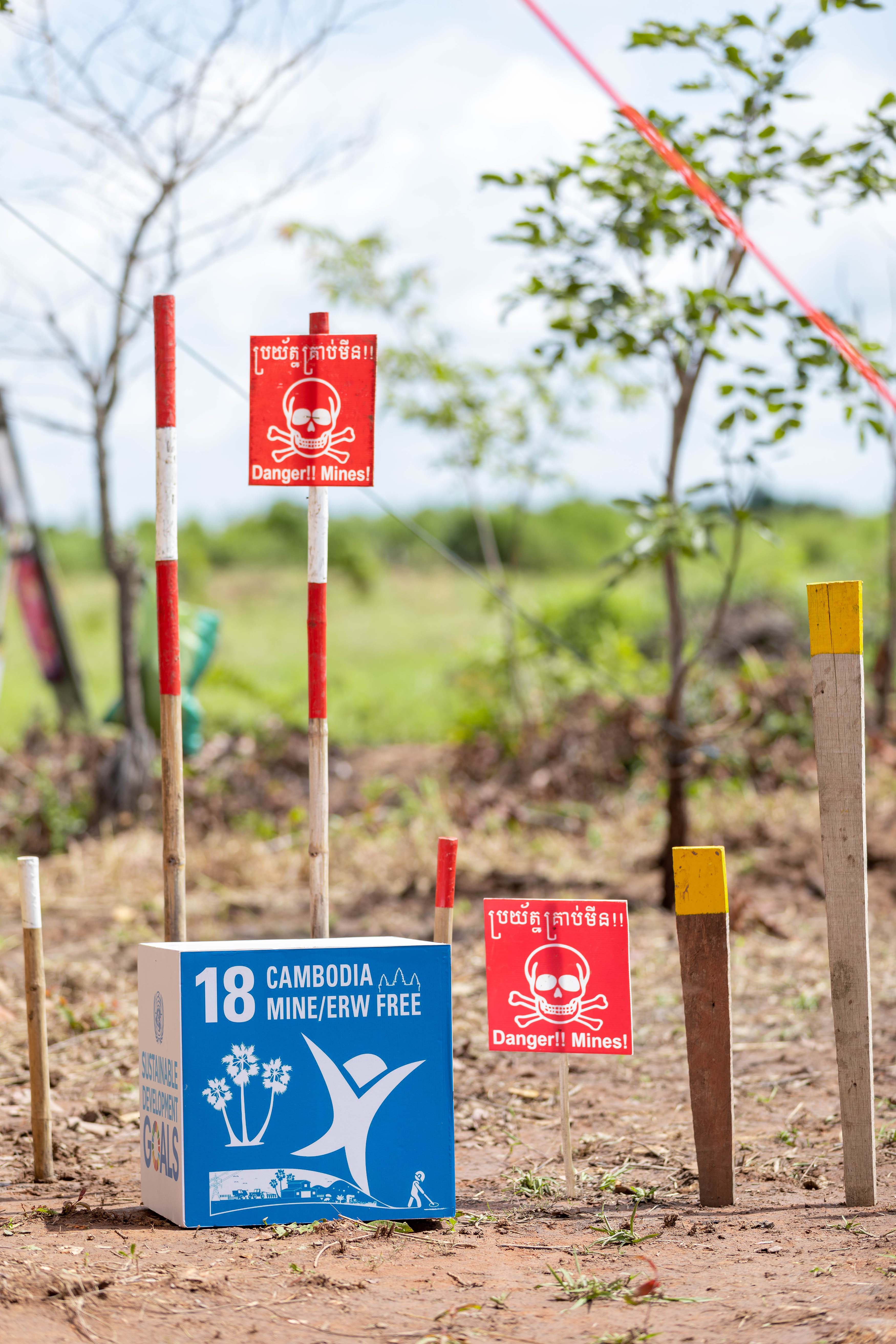
Minefield being cleared by HALO Trust, Pailin province, 10 September 2020. Photo UNDP Cambodia/Manuth Buth


Primary school students in Xieng Khouang province, the Lao People’s Democratic Republic attending Explosive Ordnance Risk Education (EORE) session organized by Lao National Unexploded Ordnance Programme (UXO Lao). Photo UNDP/Pongpat Sensouphone

A female deminer from Lao National Unexploded Ordnance Programme team demonstrating how to carry out technical survey in Xieng Khouang province. Photo UNDP/Pongpat Sensouphone
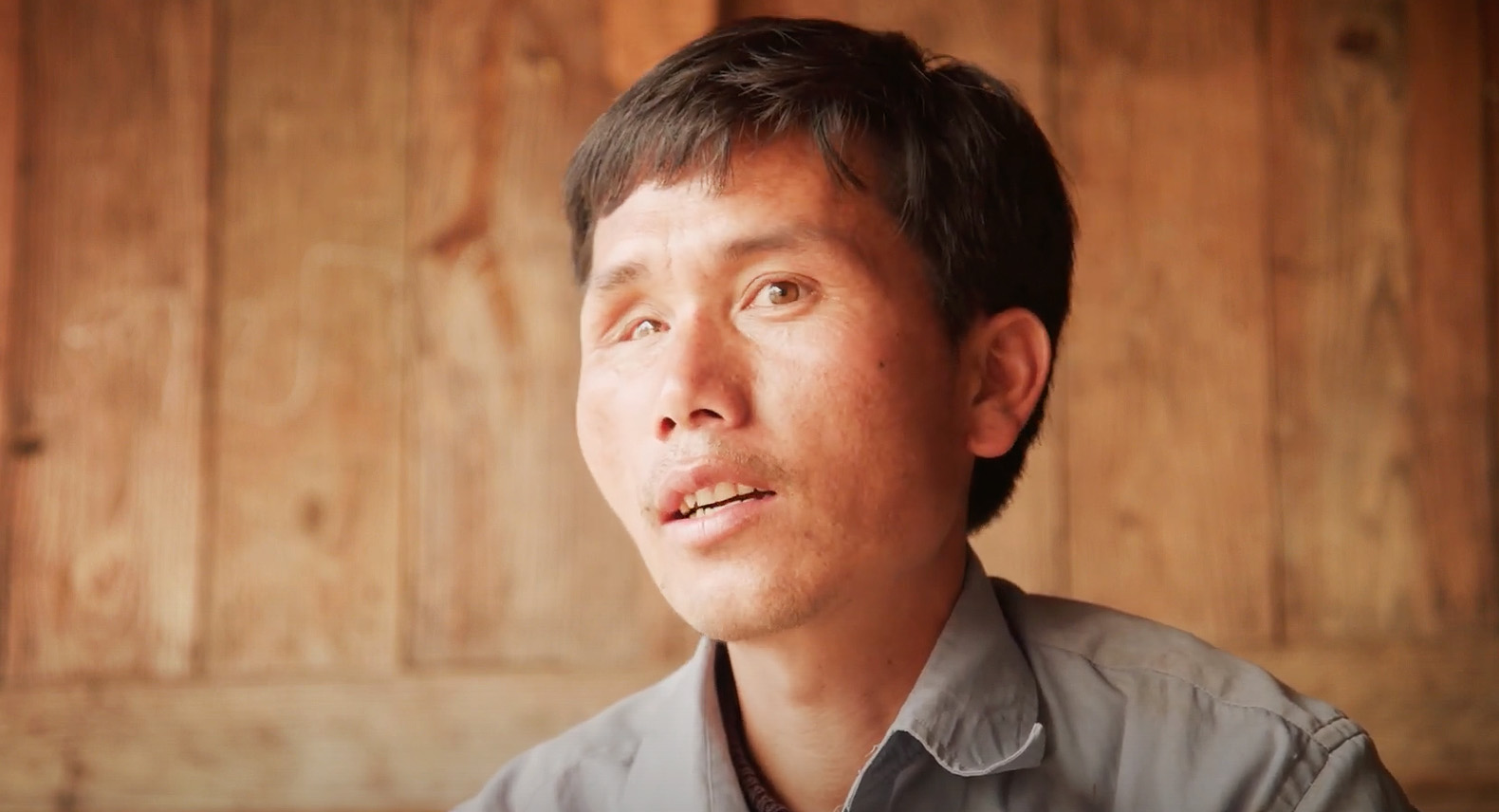
Mr. Veuyang of Xieng Khouang province lost his right eye due to a UXO accident. Photo UNDP/Humanitarian Media Agency

Mrs. Mun was born in 1974, the year after the bombing ended, so she should have escaped the conflict and been brought up in a time of peace. However unexploded cluster munitions still contaminate the ground around her home. She was injured twice as a child and last year, as she worked the fields with her brother and daughter, they accidentally triggered an unexploded bomb (UXO). When she regained consciousness, she found they were both dead. Photo/Giles Duley
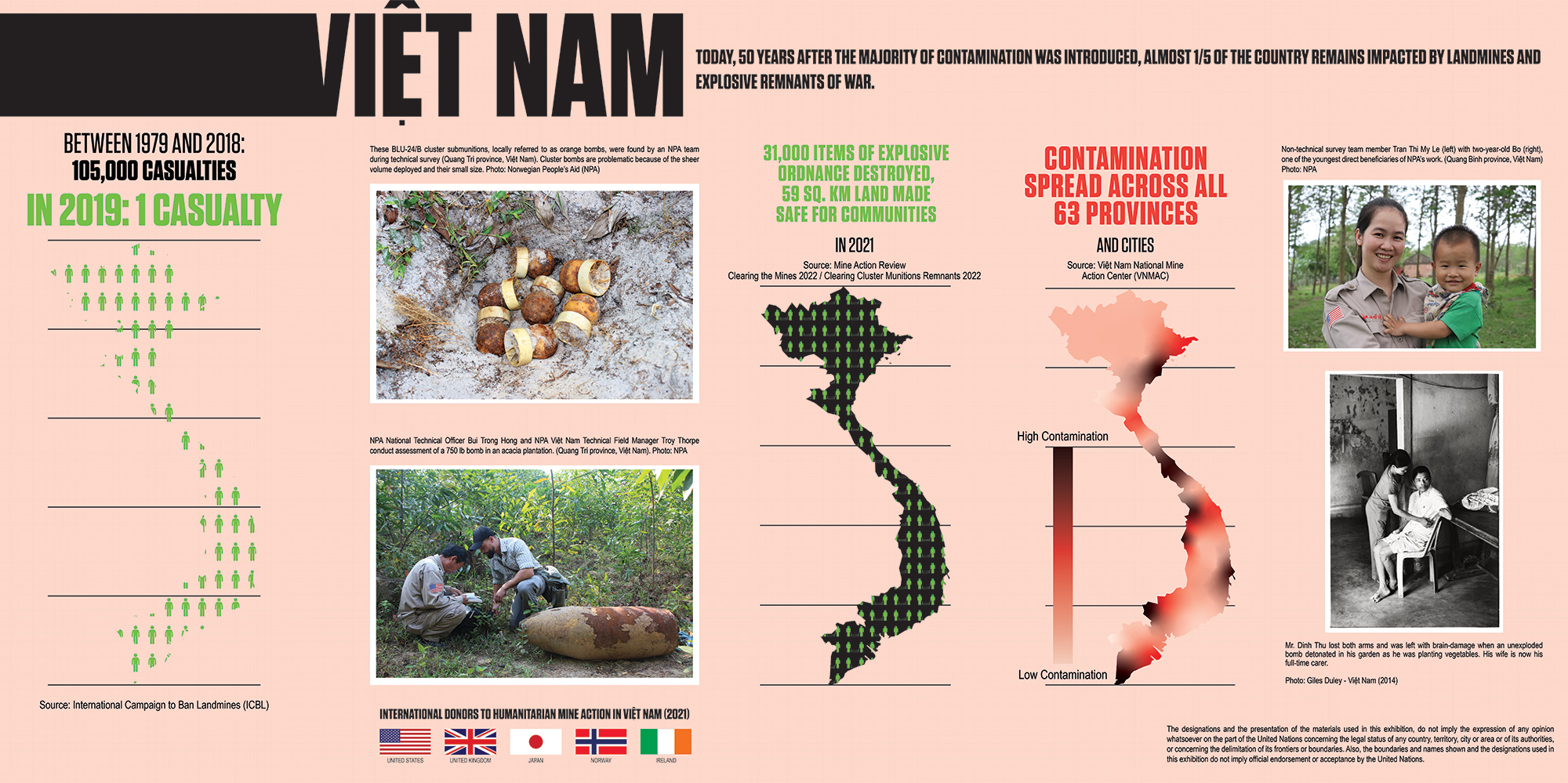

Non-technical survey team member Tran Thi My Le (left) with two-year-old Bo (right), one of the youngest direct beneficiaries of NPA’s work (Quang Binh province, Viêt Nam). Photo/NPA

NPA National Technical Officer Bui Trong Hong and NPA Viêt Nam Technical Field Manager Troy Thorpe conduct assessment of a 750 lb bomb in an acacia plantation. (Quang Tri province, Viêt Nam). Photo/NPA

Mr. Dinh Thu lost both arms and was left with brain-damage when an unexploded bomb detonated in his garden as he was planting vegetables. His wife is now his full-time carer. Photo/Giles Duley (Viêt Nam - 2014)
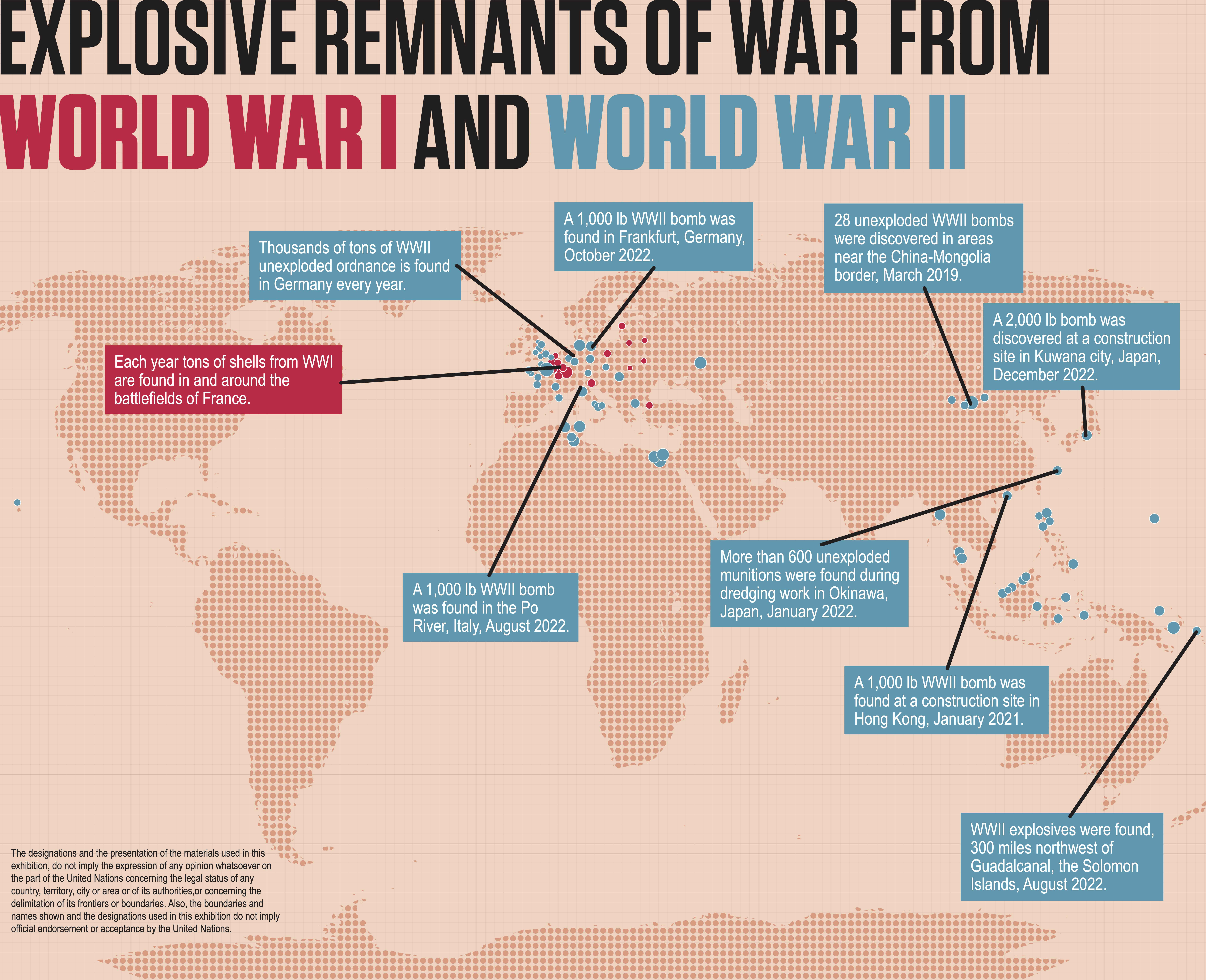
Contributing Partners
International Campaign to Ban Landmines (ICBL)
The International Campaign to Ban Landmines (ICBL) is a global network of non-governmental organizations, active in some 100 countries, that works for a world free of antipersonnel landmines, where landmine survivors can lead fulfilling lives.
Legacies of War
Legacies of War is an educational and advocacy organization working to address the impact of the American war and the conflict in South-East Asia, including removal of unexploded ordnance (UXO). We raise awareness about the history of the war bombing of the Lao People’s Democratic Republic, provide space for healing the wounds of war, and create greater hope for a future of peace. The UXO problem in the Lao People’s Democratic Republic has persisted for far too long. Too many innocent lives have been lost. Too many farmers and children have been left disabled, their lives forever changed. But it is not too late to stop this senseless suffering. We’ve already proven positive change is possible. Our vision is simple: clear the Lao People’s Democratic Republic as much as possible within our lifetime.
Legacy of War
Since 2017, Legacy of War Foundation has been campaigning for a world without conflict, and supporting the communities and survivors affected by it. We work collaboratively with communities to establish sustainable, localized projects which are led by our partners. Mr. Giles Duley, a documentary photographer, writer, storyteller and the CEO of Legacy of War Foundation, is the first United Nations Global Advocate for Persons with Disabilities in Conflict and Peacebuilding Situations. He will ensure that the voices of those disabled by explosive ordnance are heard in the larger conversations on persons with disabilities in peacebuilding situations.
Mines Advisory Group (MAG)
Mines Advisory Group (MAG) is a global humanitarian and advocacy organization that finds, removes, and destroys landmines, cluster munitions, and unexploded bombs from places affected by conflict. MAG provides education programs so that children and their families can live, work, and play as safely as possible until all the land that surrounds them is clear. Since 1989, MAG has helped over 20 million people in 70 countries rebuild their lives and livelihoods after war. MAG shares the 1997 Nobel Peace Prize as part of the International Campaign to Ban Landmines.
Norwegian People’s Aid (NPA)
Norwegian People’s Aid is a politically independent membership-based organization working in Norway and in more than 30 countries around the world. Founded in 1939 as the labour movement's humanitarian solidarity organisation, NPA aims to improve people's living conditions and to create a democratic, just and safe society. NPA's international work covers three core areas: Mine Action and disarmament, Development and Humanitarian relief aid.
UNICEF
UNICEF works in over 190 countries and territories to save children's lives, to defend their rights, and to help them fulfil their potential, from early childhood through adolescence.
United Nations Development Programme
UNDP works in about 170 countries and territories, helping to eradicate poverty, reduce inequalities and exclusion and build resilience so countries can sustain progress. As the UN’s development agency, UNDP plays a critical role in helping countries achieve the Sustainable Development Goals.
This exhibit was launched in April 2023


